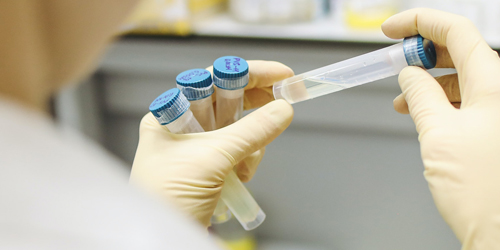Legionella Water Management Program
Below are the steps to creating a water management program. These can be used by all organizations, including healthcare facilities and hospitals that are required to follow The Joint Commission water management standard (EC.02.05.02, EPs 1 through 4).
![]() Call: 888-416-8626
Call: 888-416-8626
to speak with a Legionella control expert
Every commercial building with a complex water system should implement a Water Management Program (WMP). This program should be comprehensive in nature and include a 7 Step Water Management Program in accordance with ASHRAE 188 standards. The 7 Step Water Management Program, a written document outlining specific processes and procedures, may be thought of as the Standard Operating Procedures (SOP) of the building water system. This 7 Step Water Management Program helps identify critical areas of concern within the facility water system that may harbor or promote waterborne pathogen growth, such as Legionella, and outline procedures to minimize risk for Legionnaires' disease as well as processes to address any abnormalities or issues found in the facility water system.
The 7 Steps of an effective Water Management Program include:

Step 1: Establishment of the Water Management Team
Step 1: Establishment of the Water Management Team
The first step of an effective Water Management Plan is to establish the Water Management Team. This team may include facility managers, maintenance staff, facility employees, business partners, key decision makers and water industry experts.
Learn More About the Water Management Team
Step 2: Determination of Water System Goals
Step 2: Determination of Water System Goals
Once the water management team is in place, the next step for these stewards of the facility water system is to set the goals of the building water system. The high-level goals of the water system should be increasing the benefits of the water system while reducing the risks in the water system.
Learn More About Water System Goals
Step 3: Description of the Water System
Step 3: Description of the Water System
The third step in the creation of a water management plan is to create a detailed document of all facility water systems. This document must include a water flow diagram that follows the water as it progresses through the facility and be easy enough to understand by all team members.
Learn More About the Water System
Step 4: Identification of Potential Risks (Hazard Analysis)
Step 4: Identification of Potential Risks (Hazard Analysis)
Identifying areas of potential risks in the water system, or hazard analysis, is the next step in the water management plan. During this step, the water management team analyzes the facility water systems for efficiency and safety.
Learn More About the Potential Risks
Step 5: Strategies for Risk Mitigation (Contingency Plans)
Step 5: Strategies for Risk Mitigation (Contingency Plans)
Step 5 of the water management plan is the creation and documentation of strategies for risk mitigation. Known as “contingency plans”, these strategies of corrective actions are created to address any unforeseen event that could potentially increase liability.
Learn More About Risk Mitigation
Step 6: Verification – Water System Monitoring
Step 6: Verification – Water System Monitoring
Water quality monitoring is defined as the sampling and analysis of water constituents and conditions. It is a measure of physical, chemical, biological and microbiological characteristics of water used to alert water management teams about current problems, such as the existence of pathogens, as well as the potential for problems to arise in a water system.
Learn More About Verification
Step 7: Validation – Periodic Water System Testing
Step 7: Validation – Periodic Water System Testing
Validation is a quality control function showing that the water management program is effective when it is implemented as designed to control hazards and hazardous conditions in the water system. Validation is achieved by periodic water system testing.
Learn More About Validation






